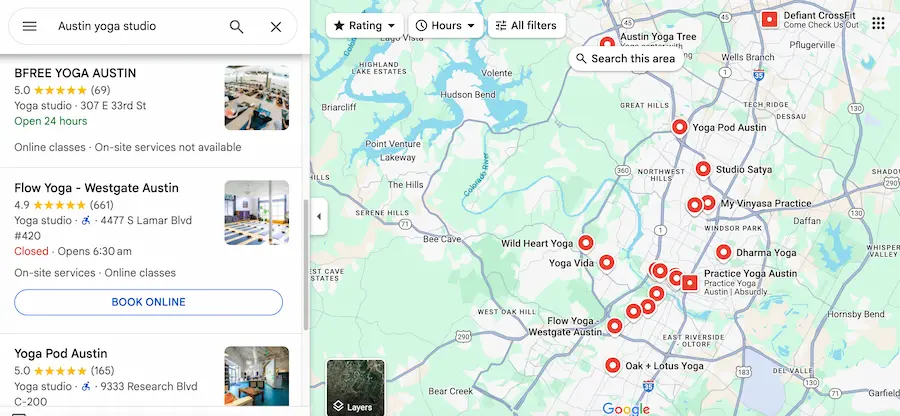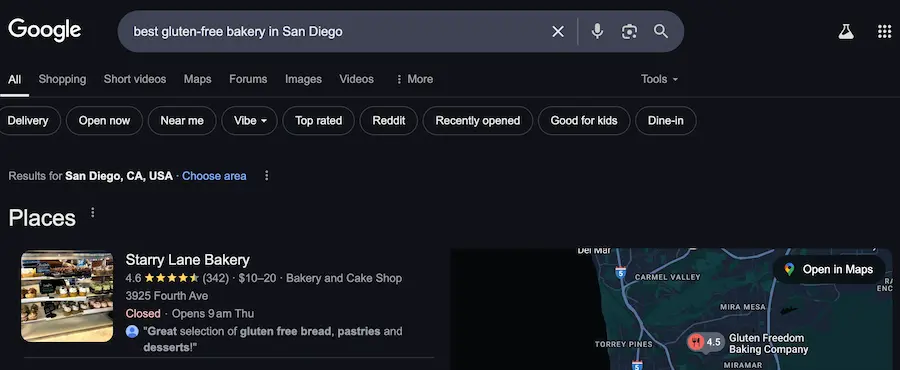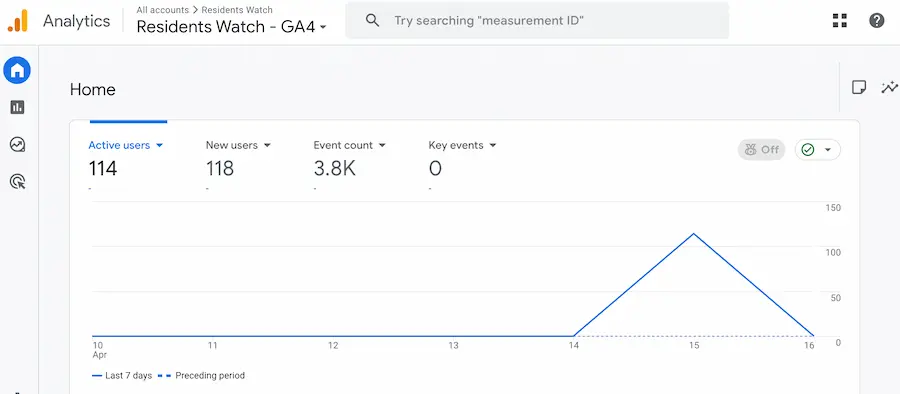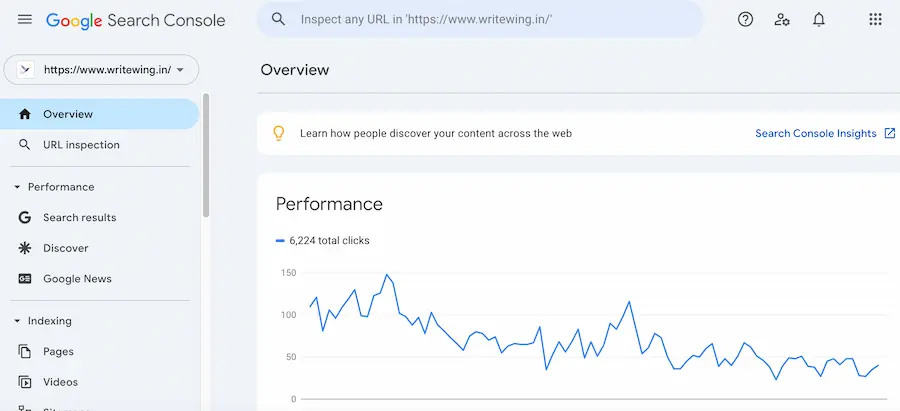If you’re running a small business in the U.S., you probably wear a lot of hats—CEO, marketing manager, customer service rep, maybe even janitor. With so much on your plate, it’s easy to overlook one thing that could quietly make or break your online presence: SEO.
Search Engine Optimization isn’t just for techies or big brands with six-figure marketing budgets. It’s the fuel behind your website’s visibility, your Google rankings, and ultimately, your leads and sales. But here’s the kicker: most small businesses are doing it wrong.
Below are the top 5 SEO mistakes U.S. small business owners commonly make—and more importantly, how you can fix them without hiring a full-blown agency.
1. Ignoring Local SEO (Even If You Have a Physical Store)
The Mistake:
Many small business owners assume SEO is about competing nationally. But if you’re a plumber in Cincinnati or a yoga studio in Austin, local visibility is what really counts. Surprisingly, many businesses still don’t have Google Business Profiles set up or don’t bother with location-specific keywords.

Elevate Your Digital Presence
Ready to transform your content strategy? Our expert team delivers SEO-optimized blogs and powerful backlink strategies that drive real results.
Boost Your Content Strategy →Real-World Example:
Imagine someone in Chicago searches for “best Italian restaurant near me.” If you run a cozy trattoria in Wicker Park but haven’t optimized for local SEO, you’re invisible.
How to Fix It:
- Claim and optimize your Google Business Profile
- Add NAP (Name, Address, Phone) on every page
- Use location-based keywords like “Austin yoga studio” or “Los Angeles marketing agency”
- Get listed on local directories (Yelp, TripAdvisor, Yellow Pages)
2. Targeting the Wrong Keywords
The Mistake:
Many small business websites either stuff pages with irrelevant keywords or chase highly competitive terms they have no shot at ranking for. Others skip keyword research altogether and write what they think people want to read.
Why It Hurts:
If you’re targeting “coffee” instead of “coffee shop in Brooklyn with free WiFi,” you’re not reaching the audience that’s actively looking for your product or service.
How to Fix It:
- Use free tools like Ubersuggest, Google Keyword Planner, or AnswerThePublic
- Focus on long-tail keywords (e.g., “best gluten-free bakery in San Diego”)
- Check competitor websites to see what they rank for
- Align your content with search intent (Are people looking to buy? Learn? Compare?)

3. Not Optimizing for Mobile
The Mistake:
We’re in 2025, and still some websites look like they were made on a dial-up connection in 2008. If your site isn’t mobile-responsive, you’re not just losing visitors—you’re getting penalized by Google.
The Stats Don’t Lie:
Over 60% of searches in the U.S. now happen on mobile. If your site doesn’t adapt to different screen sizes, you’re essentially rolling out a red carpet for your competitors.
How to Fix It:
- Use a mobile-friendly theme if you’re on WordPress or Shopify
- Test your site with Google’s Mobile-Friendly Test
- Check font sizes, button spacing, and load times
- Compress images and eliminate heavy scripts to reduce page bloat
4. Forgetting to Optimize Meta Titles and Descriptions
The Mistake:
Google uses your title tag and meta description to determine what your page is about—and whether to show it in search results. Yet thousands of small business websites leave them blank or default to “Home – My Website.”
What It Costs You:
Low click-through rates (CTR), poor rankings, and lost opportunities. A boring or missing meta description is like a restaurant with no signage—it might be great inside, but no one knows what’s on the menu.
How to Fix It:
- Write compelling, keyword-rich meta titles (under 60 characters)
- Keep meta descriptions under 160 characters
- Highlight what makes your business unique (“Family-owned since 1987” or “Free same-day delivery”)
- Every page should have a unique title and meta description
5. Publishing Thin or Duplicate Content
The Mistake:
Many small business sites launch with a few generic pages (“About Us,” “Services,” “Contact”) and stop there. Or worse, they copy and paste product descriptions from suppliers or other sites. Google hates both.
Why It’s a Problem:
Thin or duplicate content doesn’t provide value, and it won’t rank. Plus, if Google detects duplicate content, your site could get penalized or de-indexed.
How to Fix It:
- Create original blog content that answers common customer questions
- Write in-depth service pages tailored to each offering (e.g., separate pages for “AC Installation” and “AC Repair”)
- Avoid using AI-generated text verbatim without edits—customize it for tone and relevance
- Add content regularly to keep the site fresh
Bonus Mistake: Not Tracking Anything
You can’t improve what you don’t measure. If you have no idea how many people visit your site, where they come from, or what keywords they use—how will you grow?
Fix: Set up Google Analytics and Google Search Console (both free) to start tracking traffic, keyword rankings, and page performance.

SEO Checklist for U.S. Small Business Owners
Before you close this tab, here’s a quick-hit checklist to audit your website today:
- [ ] Claimed and verified Google Business Profile
- [ ] Local keywords on homepage and key pages
- [ ] Mobile responsiveness across devices
- [ ] Each page has unique title and meta description
- [ ] No duplicate or thin content
- [ ] Blog posts published at least twice a month
- [ ] Keyword research done using free tools
- [ ] Google Analytics and Search Console installed
- [ ] Website loads in under 3 seconds
- [ ] Clear internal linking between pages

Final Thoughts
SEO can feel overwhelming, especially if you’re a solo entrepreneur or running a lean team. But ignoring it doesn’t make the problem go away—it just gives your competitors more room to shine.
The good news? Fixing these five common SEO mistakes doesn’t require a huge budget. With a bit of consistency and the right tools (many of which are free), you can boost your visibility, drive more traffic, and grow your small business online.
So what’s the first mistake you’re going to fix today?
FAQs
What are the biggest SEO mistakes to avoid for keyword stuffing in 2025?
One of the biggest SEO mistakes to avoid in 2025 is keyword stuffing. This outdated practice involves overloading your content with target keywords in an unnatural way. Search engines have become incredibly sophisticated at detecting this manipulation, and they’ll penalize your site for it. Instead, focus on creating quality content that incorporates keywords naturally and provides value to your target audience. Aim for a keyword density of 1-2% and prioritize semantic relevance over repetition. Remember that user experience should always come first in your SEO strategy.
How does site speed impact my website’s ability to rank well?
Site speed is now a critical ranking factor that many website owners still underestimate. In 2025, slow-loading sites will continue to suffer in search engine rankings. Google’s Core Web Vitals metrics measure loading performance, interactivity, and visual stability—all aspects of site speed that directly affect user experience. To fix this issue, compress images, implement browser caching, minimize HTTP requests, and consider using a Content Delivery Network (CDN). Regular technical SEO audits can help identify specific speed issues. Even a one-second improvement in loading time can significantly boost your conversion rate and help your website rank higher in SERPs.
What are the common anchor text mistakes that hurt my SEO strategy?
When it comes to anchor text, several mistakes can undermine your SEO strategy. First, using exact-match anchor text too frequently appears manipulative to search engines. Another mistake is using generic phrases like “click here” that provide no context to search engines about the linked content. Over-optimized anchor text can trigger penalties, while insufficient internal linking wastes opportunities to establish topical relevance. To fix these issues, use varied, descriptive anchor text that naturally fits within content, distribute your anchor text profile across branded, partial-match, and contextual options, and ensure your internal linking structure follows a logical hierarchy that helps both users and search engines navigate your site effectively.
How important is understanding search intent for my SEO content in 2025?
Understanding search intent is absolutely crucial for your SEO content in 2025. This is no longer optional—it’s fundamental to rank well. Many SEO efforts fail because content doesn’t align with what users are actually looking for. Search engines have become exceptionally good at determining whether content satisfies user queries. To fix this issue, analyze the current top-ranking pages for your target keywords to understand the dominant intent (informational, navigational, commercial, or transactional). Then, structure your content to address that intent directly. Also, look beyond keywords to understand the questions and problems your target audience is trying to solve. Creating content that truly satisfies search intent will improve engagement metrics, which further reinforces your search rankings.
What are the common internal linking mistakes that hurt my SEO efforts?
Internal linking is often underutilized in SEO strategy, yet it’s one of the most powerful tools at your disposal. Common mistakes include using inconsistent anchor text, creating orphan pages with no internal links pointing to them, ignoring a logical site structure, and overloading navigation menus. To fix these issues, conduct a site audit to identify pages with few internal links, create a strategic internal linking plan that establishes topic clusters around your main services or products, use descriptive anchor text that includes relevant keywords, and ensure every new page gets linked from at least a few existing pages. Proper internal linking distributes page authority throughout your site and helps search engines understand the relationship between your content, significantly improving your chances to rank higher.
Why are meta tags still important for SEO in 2025 and how can I optimize them?
Meta tags remain crucial SEO elements in 2025 despite many changes in search algorithms. The title tag is still one of the strongest on-page ranking factors and directly impacts click-through rates from search engine results. Meta descriptions, while not direct ranking factors, significantly influence whether users click on your listing. Common meta tag mistakes include duplicate titles across pages, overly long titles that get cut off in SERPs, and generic descriptions that don’t entice clicks. To fix these issues, ensure each page has a unique, compelling title under 60 characters that includes your target keyword near the beginning. Write meta descriptions under 155 characters that act as “ads” for your content, incorporating relevant keywords naturally while promising value to searchers. Don’t forget schema markup, which helps search engines understand your content context and can lead to rich snippets in search results.
How can I create quality content that actually helps my website to rank in 2025?
Creating quality content remains fundamental to rank well in 2025, but the bar for “quality” continues to rise. Poor-quality content is characterized by thin information, lack of expertise, high bounce rates, and limited engagement. To fix these issues, start with thorough keyword research focused on topics your target audience actually cares about. Then, ensure your content demonstrates E-E-A-T (Experience, Expertise, Authoritativeness, Trustworthiness) principles by including verified facts, expert quotes, and original insights. Optimize your content for readability with short paragraphs, subheadings, and multimedia elements. Focus on comprehensive coverage that answers all potential questions about a topic. Most importantly, prioritize providing genuine value over hitting specific word counts. The best SEO content solves problems for users while naturally incorporating relevant keywords and earning backlinks through its quality.
What are the common technical SEO issues that will hurt rankings in 2025?
Technical SEO issues can severely impact your search engine rankings in 2025, yet they often go unnoticed. Common technical SEO issues include improper canonical tags leading to duplicate content problems, poor mobile responsiveness, broken internal links, faulty redirects, unoptimized robots.txt files, and missing or inadequate XML sitemaps. Page experience factors like Core Web Vitals are also critical technical considerations. To fix these issues, conduct regular technical SEO audits using tools like Screaming Frog, Google Search Console, and PageSpeed Insights. Ensure your website is mobile-friendly with responsive design, fix crawl errors promptly, implement proper schema markup, and optimize your site architecture for efficient crawling. Don’t let SEO issues like slow page load times or rendering problems undermine your content quality and link-building efforts—technical SEO provides the foundation that all other SEO work builds upon.
How can I optimize for local search without making common SEO mistakes in 2025?
Optimizing for local search becomes increasingly important in 2025, but many businesses make critical mistakes in their approach. Common local SEO mistakes include inconsistent NAP (Name, Address, Phone) information across platforms, unclaimed or incomplete Google Business Profile listings, neglecting local keywords in your content, ignoring local backlink opportunities, and failing to collect customer reviews. To fix these issues, ensure your business information is identical across all online directories, fully optimize your Google Business Profile with photos, services, and regular posts, incorporate localized content on your website that mentions neighborhoods and landmarks, build relationships with local businesses for authentic backlinks, and actively request and respond to customer reviews. Also, implement local schema markup on your website to help search engines understand your geographic relevance. A strong local search presence is essential for businesses wanting to capture nearby customers and appear in the valuable local search results pack.
What role does mobile-friendly design play in SEO mistakes to avoid in 2025?
In 2025, having a mobile-friendly website isn’t just recommended—it’s absolutely essential for SEO success. With Google’s mobile-first indexing fully implemented, search engines primarily use the mobile version of your site for ranking and indexing. Common mobile SEO mistakes include non-responsive design, slow loading on mobile devices, intrusive interstitials that block content, tiny tap targets that are difficult to click, and unoptimized images that waste bandwidth. To fix these issues, implement a fully responsive design that adapts to all screen sizes, optimize images specifically for mobile viewing, simplify navigation for thumb-friendly usage, eliminate large pop-ups that Google penalizes, and regularly test your site’s mobile performance using tools like Google’s Mobile-Friendly Test. Remember that mobile optimization directly impacts user experience metrics like bounce rate and time on site, which in turn influence your search rankings. Mobile users have different needs and behaviors than desktop users, so your SEO strategy must account for these differences to rank well in 2025.
